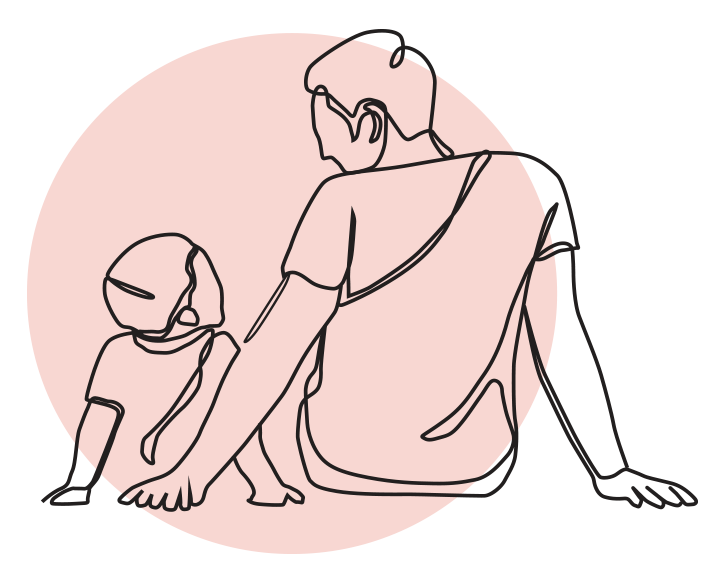How & When to Introduce Solid Foods
Weaning a baby is a significant milestone that requires careful consideration and planning. It marks the transition from exclusive breastfeeding or formula feeding to introducing solid foods. Many parents may feel uncertain about when to start and which foods to introduce first. In this article, guest blogger Faith McNamara explores some common questions about baby weaning with expert Maternity Nurses.
To gain a more comprehensive understanding of the baby-weaning process, childcare and housekeeping provider Little Ones, conducted interviews with two experienced Maternity Nurses about their firsthand experience of baby weaning.
How do you determine when it’s the right time to start weaning a baby?
The World Health Organisation (WHO) recommends exclusive breastfeeding for the first six months of a baby’s life, followed by the introduction of solid foods while continuing to breastfeed until at least two years of age.
However, some babies may show signs of readiness for solid foods before the six-month mark, such as sitting up with support and showing interest in food by reaching for it or opening their mouths. It is crucial to consult with a pediatrician to determine if the baby is ready for solid foods and discuss the appropriate time to start weaning your baby. All babies develop at different rates and the right time for one baby doesn’t mean it’s the same for another.
Gloria is a Maternity Nurse who has been working in her field of expertise for over 20 years. She told us that many babies nowadays start wanting food earlier than WHO guidelines suggest – either by refusing milk or overconsuming milk, sometimes as early as four months old.
She suggested that a small teaspoon of baby food a day could be given to slowly introduce them to the idea of food without causing intestinal issues if a baby appears to be ready. However, she also mentioned that feeding a baby too much too early can cause gastroenteritis, which can lead to sickness, diarrhea, and a lot of crying.
What are the first steps you should take when starting weaning?
The first step is to introduce single-ingredient pureed or mashed foods, such as vegetables or fruits, one at a time. This is to identify any potential allergies or intolerances. It is also essential to start with small amounts and gradually increase the quantity and variety of foods as the baby’s appetite and tolerance increase. It is recommended to introduce one new food every three to five days.

What are the most recommended weaning foods you should try first?
Nutrient-dense and easy-to-digest foods should be the first choices for your baby. Examples of such foods include pureed sweet potato, mashed banana, avocado, and cooked carrots. It’s highly recommended to also gradually introduce iron-rich foods, such as pureed meats, beans, and lentils, as these are essential for the development of your baby.

Introducing these foods early on will ensure that your baby is receiving the necessary nutrients for healthy growth and development.
Nurse Gloria strongly suggests beginning with vegetables and pulses, as fruits are very sweet and, if introduced first, may lead to a preference for sweet foods over the more plain vegetables. Therefore, it is more likely that children will be willing to try the vegetables and pulses if they are presented first.
What do you do differently with fussy babies?
Fussy eaters will require extra patience and encouragement to ensure their nutritional needs are met. Mothers are advised to continue offering a variety of foods and not force baby to eat.
Making mealtime fun and interactive, such as allowing the baby to explore the food with their hands or giving them a spoon to hold, can help encourage their interest in eating. It is also recommended to try different textures and flavours to find what baby likes.

The Maternity Nurses we interviewed suggest that if a mum or caregiver struggles to get a fussy baby to eat, distraction will likely be the key to success. Distracting a baby during mealtime can help to take their focus away from the food and onto something else.
This can be done by engaging them in conversation, playing a game, or providing them with a toy to play with. Additionally, you can make mealtime fun by singing songs, playing music, or telling stories.
How can a maternity Nurse help?
As a Maternity Nurse, it’s important to respect the parents’ wishes and cultural practices while also ensuring the baby’s nutritional needs are met. Educating parents on the importance of balanced and varied nutrition is paramount to helping them make informed decisions about their baby’s diet. While Nurses can advise and make suggestions regarding diet and nutrition, the ultimate decision lies with the parents.
Weaning a baby can be a challenging and exciting journey for baby, and parents. It is essential to consult with a pediatrician and take a gradual and patient approach to ensure baby’s health and safety. Introducing nutrient-dense foods, being creative with mealtimes, and having open communication with parents will help make the process of weaning a positive experience.
All care providers should be mindful of babies’ developmental milestones and adjust the weaning process accordingly. With the right guidance and support, this can be a rewarding and enjoyable experience for everyone involved.
Faith McNamara is an in-house blog writer for Little Ones, a London-based childcare and housekeeping service provider.




